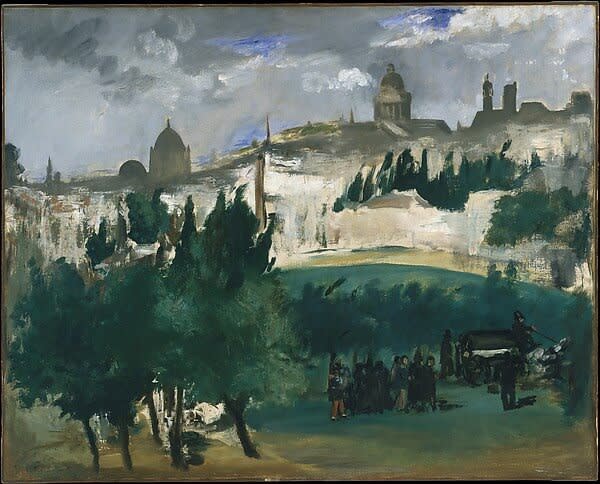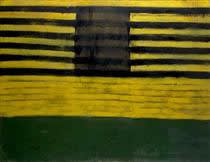At age 80, Frank Stella paints with a compression gun, uses digital fabrication and 3-D printing to create his sculptural pieces. His retrospective at the opening of the Whitney’s new Chelsea location in 2015 was as exciting and interesting as his 1970 retrospective at MoMA, when he became the youngest artist to have a MoMA retrospective.
Surprising Influences
Rogier van der Weyden’s, Crucifixion Diptych, painted c. 1460, is one of Stella’s favorite paintings. It is effective, emotional and unlike any of the Early Netherlandish paintings of the fifteenth century. It’s clarity, precision and color had a profound influence on Stella’s work.
After graduating from Princeton at age 22, Stella moved to New York. His frequent visits to the Frick and the Met led him to a better understanding of the great masters.
Charles-François Daubigny’s Dieppe, painted in 1877, was one of the works that Stella saw at The Frick, and led him to see a direct connection between the old masters and modern works. Dieppe, Stella said, looked like it was done in a single gesture. “No art,” he said, “ is any good unless you feel how it is put together.”
Édouard Manet’s Funeral, done in 1867, is an unfinished work. Funeral is believed to depict the funeral of writer Charles Baudelaire, which was poorly attended because many of his friends were away on summer holidays and because of a threatening summer storm that day. Like Dieppe, the work inspired Stella to paint abstract landscapes that satisfied his notion of what a painting could be, how it could fill the space of a canvas and give rise to emotional content.
Stella said that the visual impact of the works of van der Weyden, Daubigny and Manet had such a profound effect on him, that he was inspired to make art with as much depth as the old masters.
Although much different in character than the paintings he so admired, Stella began to paint landscapes that were modern in design and still had the impact of the works he so admired. In 1958, Stella painted Seward Park, one of the parks on the Lower East Side of Manhattan. In 1959, he painted Tomlinson Park, part of the Black Paintings series that catapulted his career when he was just 23 years old and influenced other artists of his generation to move away from abstract expressionism and create work that was more painterly, more thoughtful and more experimental in terms of the use of space in and around the canvas.
Creating New Forms
As Stella continued to work, he began to use more color and form. He combine painting and sculpture and blurred the lines between the two. From shapes on canvas to shaped canvasses to painted sculptures, Stella’s work continues to change as he creates with new materials and concepts.
Stella currently has exhibits and retrospectives in major venues in America and around the globe.
He lives in a townhouse in Greenwich Village and drives to his studio in the town of Rock Tavern, New York about sixty miles north of the city, every weekday.
We have some of the finest examples of Frank Stella’s work in our gallery. Please visit, or contact us, for more information about the work of Frank Stella and the other fine artists available at VFA.







